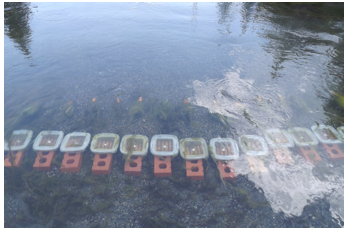Boom and bust of an aquatic invasive species? Population monitoring of the New Zealand mudsnail (Potamopyrgus antipodarum) and interactions with native species in Polecat Creek, WY
Abstract
The invasive New Zealand mudsnail (Potamopyrgus antipodarum) has been found to reach densities exceeding 500,000 individuals/m2 in Polecat Creek, located in the Greater Yellowstone Ecosystem in Wyoming. The biomass of P. antipodarum in Polecat Creek has declined in recent years, suggesting the population “boomed and busted”; the population was booming in 2000-2001, but in 2011 the biomass had decreased by ~93%, suggesting a “bust” period for P. antipodarum. Native, net-spinning caddisflies (Hydropsyche spp.) have increased dramatically in biomass from 2001-2010, which may indicate that some native macroinvertebrates have increased in biomass due to release of suppression by P. antipodarum. I collected macroinvertebrate core samples in Polecat Creek to monitor any changes in macroinvertebrate biomass and performed field experiments to determine a possible mechanism by which P. antipodarum may have suppressed Hydropsyche caddisfly populations. I allowed Hydropsyche larvae to establish and build nets on tiles within experimental chambers in Polecat Creek and added “boom” and “bust” densities of P. antipodarum to chambers. Preliminary results showed no significant difference between the number of nets present in control chambers excluding P. antipodarum and chambers containing “boom” and “bust” densities of P. antipodarum. This suggests that P. antipodarum do not actively destroy nets, but may interfere with feeding by clustering upon nets.
Featured photo from Figure 2 in report.

